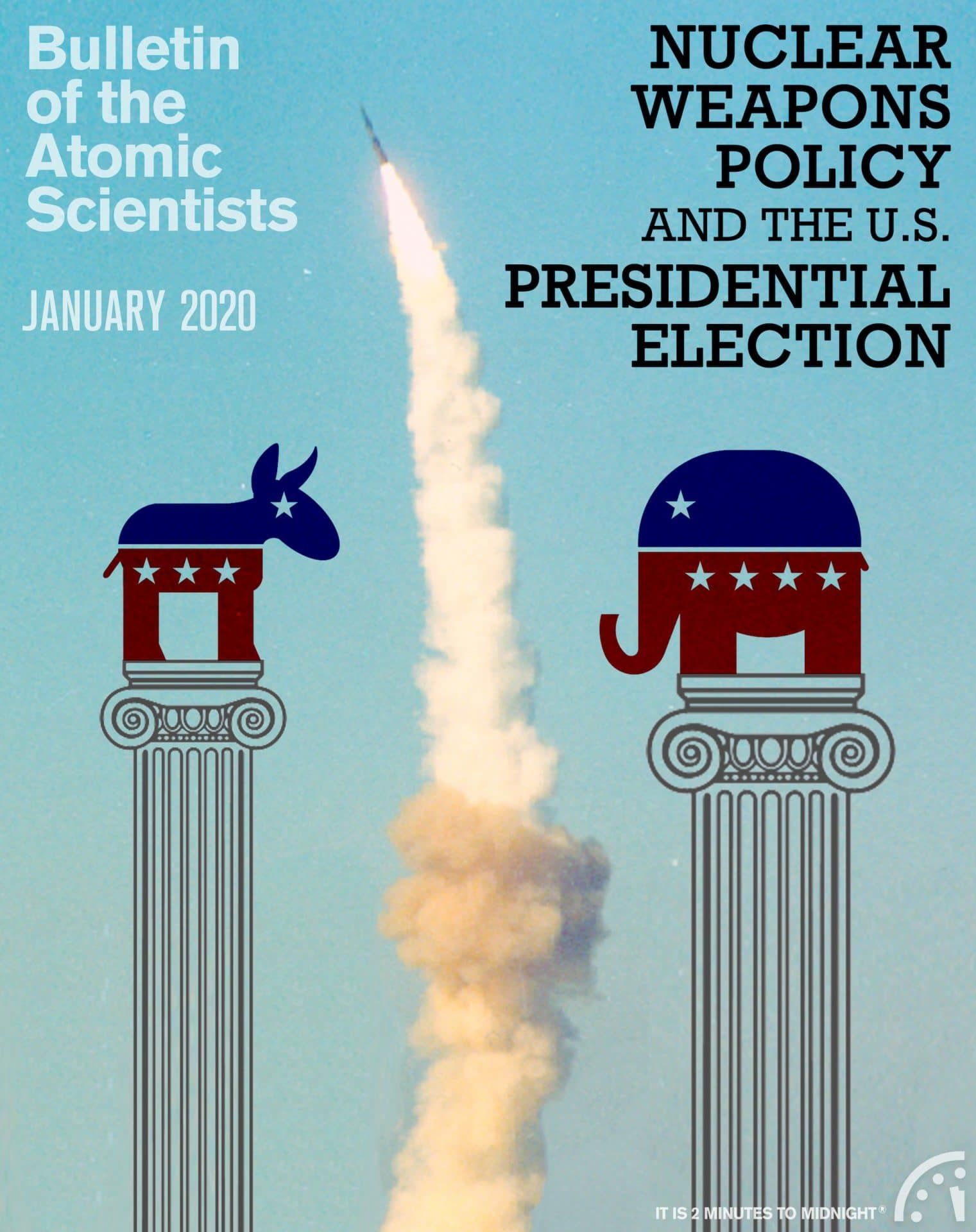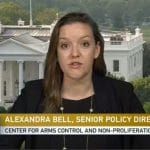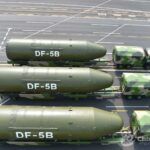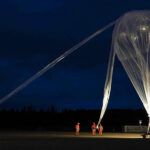No to no first use—for now
By James N. Miller | January 1, 2020
No to no first use—for now
By James N. Miller | January 1, 2020
Since the end of World War II, the United States has threatened the first use of nuclear weapons as a central element of its strategy to deter armed aggression. Over time, the conditions for US nuclear first use have been narrowed substantially; today, US policy is to consider nuclear first use only in “extreme circumstances,” and only against adversaries who have nuclear weapons or are not in compliance with their Nuclear Non-Proliferation Treaty (NPT) obligations. The United States should continue to work to reduce the role of nuclear weapons in its national security strategy with a long-term aim of shifting to a no-first-use policy; the question should not be whether, but under what conditions to make such a shift. While the conditions are not ripe today, working to establish them is a valuable goal.
US nuclear policy during the Cold War
President Truman’s decision to drop atomic bombs on Hiroshima and Nagasaki in August 1945 left no doubt regarding US nuclear weapons employment policy at that time: They were used to end World War II. As the United States drastically drew down its conventional military forces after the war and the Soviet Union did not, budget-conscious President Eisenhower’s “New Look” strategy emphasized potential nuclear first use by the United States to offset Soviet conventional superiority.
As the Soviets deployed their own offsetting strategic weapons capable of destroying the United States as well as shorter-range tactical nuclear weapons aimed at Europe, US and NATO strategy shifted to “flexible response,” under which the alliance would attempt a non-nuclear defense first, and resort to nuclear weapons only when (as most expected to occur quickly) the Soviets and their Warsaw Pact allies gained the upper hand. The triad of land-, air-, and sea-based strategic nuclear forces, along with a diverse selection of shorter-range delivery systems for non-strategic nuclear weapons, backed up this policy, and by 1965, the United States had over 30,000 nuclear weapons. For the next 30 years or so, flexible response remained at the center of US declaratory policy.
In 1991, two seminal events altered the strategic context for the potential use of US nuclear weapons. Early that year, the United States demonstrated overwhelming conventional might in destroying Saddam Hussein’s military in Operation Desert Storm. And on the day after Christmas in 1991, the Soviet Union dissolved. The combined effect was that, as then-Chairman of the House Armed Services Committee Les Aspin put it pithily (if ungrammatically) in early 1992, “Nuclear weapons are still the big equalizer but now the United States is not the equalizer but the equalizee” (Aspin 1992). The United States made deep cuts in its nuclear arsenal, eliminating entire classes of tactical nuclear weapons, and Congress imposed a short-term moratorium on nuclear testing, which the executive branch has voluntarily extended up to today. Russia also made significant reductions in its nuclear arsenal, while notably retaining a much wider range of tactical nuclear weapons.
Despite the changed strategic situation starting in the early 1990s, the United States did not shift to a no-first-use policy in which the sole purpose of US nuclear weapons would be to deter nuclear use by others. The threat of a North Korean conventional invasion of South Korea, aided by chemical and perhaps biological weapons, was initially at the forefront of concerns. There were also lingering questions regarding Russia’s possible retention of a biological weapons program. But the United States did adopt two substantial constraints on nuclear first use, and these remain inherent in US nuclear declaratory policy today.
US nuclear first use policy: limited actors, limited circumstances
First, the United States adopted a so-called negative security assurance policy. In its current form, included in both the 2010 Obama administration and 2018 Trump administration Nuclear Posture Reviews (NPRs), this assurance states: “The United States will not use or threaten to use nuclear weapons against non-nuclear weapons states that are party to the NPT and in compliance with their nuclear non-proliferation obligations” (Department of Defense 2018, 21).
The aim of this negative security assurance, first articulated in slightly different form by Secretary of State Cyrus Vance in 1978, is to bolster non-proliferation efforts by giving non-nuclear states an additional incentive to remain non-nuclear: They will not be targeted by US nuclear weapons (Vance 1978, 384).[1]
There is an important asterisk to this US negative security assurance, an asterisk that has grown recently. Because of concerns that non-nuclear states could produce biological weapons that could kill millions of Americans, the Obama administration reserved the right “to make any adjustment in the assurance that may be warranted by the evolution and proliferation of the biological weapons threat and US capacities to counter that threat” (Department of Defense 2010, vii). The Trump administration, citing concerns over the potential for devastating cyberattacks on civilian critical infrastructure, broadened this caveat to state that “the United States reserves the right to make any adjustment in the assurance that may be warranted by the evolution and proliferation of non-nuclear strategic attack technologies and US capabilities to counter that threat” (Department of Defense 2018, 21).
Still, at present, the impact of the US negative security assurance is to limit US nuclear first use threats today to a handful of countries, including China, Russia, North Korea, and (if it is judged not to be in compliance with its nuclear non-proliferation obligations) Iran.
The second key constraint on US nuclear first use is that the US “would only consider the employment of nuclear weapons in extreme circumstances to defend the vital interests of the United States, its allies, and partners” (Department of Defense 2018, 21).
In sum, the United States reserves the right to use nuclear weapons first, but only in “extreme circumstances,” apparently including a biological attack or a major cyberattack. To consider whether this policy makes sense, we need to ask: What might those scenarios look like?
US nuclear first use in response to a biological weapons attack
As evidenced in recent experience in Syria, chemical weapons attacks could kill hundreds or thousands, even perhaps tens of thousands of people. This puts a large chemical weapons attack on the scale of the 9/11 attacks on the United States. In addition, chemical weapons have potential utility on the battlefield: Both the United States and Soviet Union had substantial chemical weapons stockpiles prior to agreeing to the Chemical Weapons Convention, which entered into force in 1997. And US and South Korean military planners have long feared that North Korea might use chemical weapons to help enable an invasion of the South.
Yet even large-scale chemical weapons attacks would cause casualties of at least one to two orders of magnitude less than nuclear weapons attacks on or near cities. Moreover, defenses against chemical weapons are feasible, and indeed after discovering the extent of Saddam Hussein’s chemical weapons program in the aftermath of the 1991 Gulf War, the US military prioritized investment in chemical weapons protection, including new individual protective gear. Although so-called fourth generation Novichok agents (as used in minute amounts in a 2018 assassination attempt in Salisbury, England) might be more effective against US and allied chemical protective gear than earlier generation agents such as sarin and VX, the lethal potential of even advanced chemical agents is still significantly less than that of nuclear weapons.
The US military has more than sufficient firepower to inflict proportionate damage (and if desired, more than proportionate damage) in response to any plausible chemical weapons use. Moreover, chemical weapons have been used multiple times in recent years, in most instances without consequences (Office of the Director of National Intelligence 2019, 8). After this history, nuclear threats would likely—and not unreasonably—be seen as disproportionate and so not credible as a deterrent threat. Put differently, if chemical weapons were the only non-nuclear threat facing the United States, a move to no first use could be undertaken with minimal risk. However, this is most certainly not the case.
The threat of biological attacks is another matter entirely. To get a sense of the potential scale of biological weapons, the 9/11 attacks on the United States killed nearly 3,000 people. In terms of lives lost, the fatalities on 9/11 equate to less than 1 percent of annual deaths from flu, which in recent years have ranged from an estimated 291,000 to 646,000 globally, according to the Centers for Disease Control (Iuliano et al. 2018).
History provides further insights. Some 50 million people, or 60 percent of Europe’s population, are estimated to have died from bubonic plague from 1346 to 1353. And smallpox, now believed to be eradicated but with the potential to be re-created, is estimated to have killed 300 million people in the 20th century. With today’s ever-advancing biotechnology, it is possible that attacks using genetically engineered pathogens could kill millions of people.
The US Cold War bio-weapons program was terminated under President Nixon, when the United States joined the Biological Weapons Convention in 1972. However, according to multiple defectors, including the former head of the Soviet program, Kenneth Alibek, the Soviet Union and at least for a period of time Russia retained a covert biological weapons program despite foreswearing such activity under the convention. According to statements by the US State Department and intelligence community in recent years, it is possible that Russia still retains a biological weapons program (Ford 2019).[2]
North Korea has at least a latent capability to produce biological weapons and may even have an active biological weapons program. Assessments differ (Parachini 2018, 4; Bennett 2013, 15).[3] Indeed, the extreme difficulty of verifying whether a nation does or does not have an active biological weapons program is a key part of the problem. The extent of the Soviet biological weapons program discovered after the end of the Cold War, as well as the extent of the Iraqi biological weapons program uncovered after the 1991 Gulf War, were surprises to the United States.
The potential for biological weapons to kill on a massive scale comparable to nuclear weapons, concerns that some potential adversaries may have or acquire biological weapons, the rapid advancement of biotechnology that makes a covert program even more feasible, and the reality that the United States has foresworn biological weapons all led the Obama administration in its 2010 Nuclear Posture Review to reserve the right for the United States to re-visit its negative security assurance if necessary (Department of Defense 2010). Since 2010, the rationale behind the Obama administration’s reservation has not been reversed either by reductions in the biological weapons threat or by significant advances in US defensive capabilities.
A biological weapons attack by a nuclear-capable country (such as North Korea) that kills hundreds of thousands or even millions of Americans, while seemingly unlikely, is unfortunately a plausible threat in the coming years or decades. In this scenario, a responsible president could reasonably determine that a conventional attack was inadequate, and that it was appropriate to employ nuclear weapons in response. Given this reality, it certainly makes eminent sense to leave the nuclear option on the table in US declaratory policy so as to contribute to deterrence of such an attack.
US nuclear first use in response to a cyber attack
A major cyberattack on the United States could result in massive economic damage, substantial social disruption, and potentially even significant loss of life. The cyber vulnerabilities of US critical infrastructure are significant and growing as the United States moves increasingly toward an economy and a society based on the so-called internet of things.
Despite increased attention to cybersecurity and significant private sector and governmental research efforts intended to shift the cyber balance from offense-dominant to defense-dominant, the advantage of the attacker will remain intact at least for the near-term. As a recent Defense Science Board task force report co-chaired by this author concluded: “The unfortunate reality is that for at least the coming five to ten years, the offensive cyber capabilities of our most capable potential adversaries are likely to far exceed the United States’ ability to defend and adequately strengthen the resilience of its critical infrastructures” (Miller and Gosler 2019, p. 4).
It is debatable whether a cyberattack on the United States or its allies could cause damage nearing the scale of a nuclear attack or a biological weapons attack. However, attempting to answer this unanswerable question is barking up the wrong tree. A much better question is: In the face of massive uncertainty over the degree of damage that cyberattacks against the US and its allies could impose today and in the future, should the United States foreswear a nuclear response to such attacks by nations outside the US negative security assurance—who happen also to be the most capable cyber adversaries identified by the US intelligence community? A direct analogue to the conclusion reached above in the context of biological weapons applies: If it is plausible that a reasonable president could rationally decide that a highly impactful cyberattack by (say) Russia or China deserved a nuclear response, then it would be far better to make this clear in advance, so as to buttress deterrence of such an attack.
There is perhaps an even more important question: Because extensive attacks on US critical infrastructure might be most likely to occur in the context of a major power war that may also include attacks on US space assets and conventional strikes against the United States and allies, should the US foreswear the first use of nuclear weapons in this context?
US nuclear first use in the context of a major power war
The United States spends more than China, Russia, North Korea, and Iran combined on defense and has by far the most capable military in the world. None of these nations desires a war with the United States. It may be tempting, therefore, to suggest that US nuclear weapons are not important to deter conventional aggression.
Before reaching a conclusion on this issue, it is worth pondering what a non-nuclear war between the United States and China or Russia might entail. It could entail early and extensive attacks on space-based assets, including those critical for nuclear command and control; early and extensive cyberattacks on both military assets and civilian critical infrastructure; and hundreds or thousands of “kinetic” strikes from missiles and aircraft. Of course, it may also involve a combined air, land, and sea invasion of US allies or partners. If so, because of the attacker’s advantage of proximity and more secure supply and lines of communication, it is possible that the invasion will initially succeed. In other words, it may be possible that the United States may suffer grievous damage to its economy, society, and military, and that its allies or partners may be facing occupation.
Even in this dire scenario, it is by no means clear that an American president would, or should, employ nuclear weapons. US forces were nearly pushed off of the peninsula by Chinese forces in the Korean War, and yet the United States did not use nuclear weapons despite its nuclear superiority. But if it is plausible that a reasonable future president could make a rational decision to threaten or use nuclear weapons to attempt to end a major power war on acceptable terms, then it certainly would be wise to leave that threat on the table in order to bolster deterrence of armed aggression in the first place.
US nuclear first use threats and assurance of US allies
The US nuclear umbrella has been a vital pillar of security in Europe and Asia for decades. There have been significant adjustments in the US nuclear force posture over the years, including President George H.W. Bush’s removal of most tactical nuclear weapons from Europe in 1991, and the US termination of the nuclear-tipped sea-launched cruise missile in 2010. However, US policy has remained relatively constant: Nuclear weapons have remained “on the table” not only in response to nuclear attack, but also in response to non-nuclear attacks should they produce “extreme circumstances” that threaten the vital interests of the United States or its allies.
The fact that the US nuclear umbrella has covered more than nuclear attacks in the past does not mean that it must do so in the future. But it does mean that US leaders must consider carefully the likely reactions of allies in Europe and Asia to any major change in policy. They must also consider the reactions of potential adversaries and the possibility of an interacting and cascading set of reactions. In a worst-case scenario, some US allies may hedge by acceding more to Russian, Chinese, or North Korean demands, while others may go in the other direction by pursuing a nuclear option for themselves. Moreover, our adversaries could feel emboldened to take military action. In such a case the alliance structures that have prevented major power war since the end of World War II could come under intense pressure.
This concern does not mean that US allies should get a veto over US nuclear policy, but it does mean that their perspectives should be heard and considered closely before any major changes in US nuclear (or other alliance) policy. No US political leaders should conclude that a no-first-use policy is in the best interests of the United States without closely considering the interests, views, and potential reactions of US allies in Europe and Asia.
No for now
There are two very good reasons for the United States to aim toward a nuclear no-first-use policy. First, such a policy—by the only nation to have ever used nuclear weapons in anger— would reinforce the now 75-year norm of non-use, helping to raise the nuclear threshold globally. Averting nuclear catastrophe in a world with multiple nuclear powers depends on continually bolstering the norm that, as articulated by President Reagan, “a nuclear war cannot be won and must never be fought.”
Second, as the years and decades pass, future presidents and their advisors will be less and less likely to have thought deeply about the grave issues associated with nuclear weapons use. Given the US electorate’s likely future focus on domestic issues, there is a growing prospect that at least some future presidents will be naïve in regard to nuclear issues and indeed to foreign policy. Opinions can differ over what constitutes “extreme circumstances”; not so for a no-first-use policy. Thus, although the President would retain sole authority to direct the employment of nuclear weapons, including through first-use, a no-first-use policy would usefully reinforce the gravity of any nuclear use to future US leaders for whom World War II and the Cold War are but chapters in a long-forgotten history textbook.
Yet, at the present, there are stronger reasons to retain current US nuclear declaratory policy, with its negative security assurance and commitment to consider nuclear employment only in extreme circumstances threatening the vital interests of the United States or its allies and partners. And with some ambiguity regarding what might constitute “extreme circumstances.” The stakes in such scenarios are as high as they get: national survival.
There are plausible scenarios, particularly involving biological weapons attacks, that are so extreme that a reasonable US president could rationally conclude that nuclear threats or the use of nuclear weapons are necessary to ensure US security. So it makes eminent sense to leave the nuclear option on the table, so as to contribute to deterrence of such an attack, however unlikely it may be.
A final key point: Any US administration—Republican or Democratic—should pursue major changes in US nuclear declaratory policy, including a shift to no first use, only if there is a sustainable bipartisan consensus behind such a shift. Based on both the Obama administration’s 2010 NPR and the Trump administration’s 2018 NPR, quite the opposite appears to be the case. Unless a substantial consensus for change exists, there is a likelihood of each successive administration over-turning its predecessor’s policy, undermining US credibility in the eyes of both allies and adversaries, and thereby undermining US security. It would be highly destructive to allow this to occur in the nuclear arena, where the future of the country and indeed the world is at stake.
Those who support the United States shifting over time to a no-first-use policy (as this author does) should pursue a four-part agenda. First, work to reduce biological threats and improve US defenses and resilience. Second, do the same for cyber threats and other US vulnerabilities, including in outer space. Today, trends in all of these arenas appear to be moving in the wrong direction. Third, work to ensure that the US military’s non-nuclear warfighting capabilities remain preeminent, and allies’ capabilities are adequate, so that with improved positions in bio-defense, cyber defense, and space resilience, a sustainable bipartisan consensus in favor of no first use could be more feasible. And fourth, work to sustain strong alliances and partnerships, by reassuring allies and partners through words and actions that the US commitment remains strong and the US nuclear umbrella remains in place.
Regardless of whether the United States ever shifts to a no first use policy, this four-part agenda is worth pursuing, as it will help reduce risks and bolster US security. In the meantime, current US nuclear declaratory policy should be sustained.
Disclosure statement
No potential conflict of interest was reported by the authors.
Funding
This research received no specific grant from any funding agency in the public, commercial, or not-for-profit sectors.
Author Biography
James N. Miller served as Under Secretary of Defense for Policy in the Obama Administration. He is a senior fellow at Johns Hopkins University’s Applied Physics Laboratory and a member of the Defense Science Board. The views expressed in this article are his own and do not reflect Department of Defense policy.
References
Aspin, Les. 1992. Three Propositions for a New Era Nuclear Policy. MIT News, June 3. http://news.mit.edu/1992/propositions-0603.
Bennett, Bruce W. 2013. The Challenge of North Korean Biological Weapons. Testimony presented before the House Armed Services Subcommittee on Intelligence, Emerging Threats and Capabilities on October 11, 2013. https://www.rand.org/content/dam/rand/pubs/testimonies/CT400/CT401/RAND_CT401.pdf
Department of Defense. 2010. Nuclear Posture Review. https://dod.defense.gov/Portals/1/features/defenseReviews/NPR/2010_Nuclear_Posture_Review_Report.pdf.
Department of Defense. 2018. Nuclear Posture Review. https://media.defense.gov/2018/Feb/02/2001872886/-1/-1/1/2018-NUCLEAR-POSTURE-REVIEW-FINAL-REPORT.PDF. Last accessed on 14-Nov-2019.
Ford, Christopher. 2019. Assistant Secretary, Bureau of International Security and Nonproliferation. “Biosecurity, Biological Weapons Nonproliferation, and Their Future.” April 11. https://www.state.gov/biosecurity-biological-weapons-nonproliferation-and-their-future/.
Iuliano, A. Danielle et al. 2018. “Estimates of global seasonal influenza-associated respiratory mortality: a modelling study,” The Lancet 391: 10127, 1285–1300.
Miller, James N. and James Gosler. 2017. Department of Defense Science Board Task Force on Cyber Deterrence Final Report, February. p. 4. https://dsb.cto.mil/reports/2010s/DSB-CyberDeterrenceReport_02-28-17_Final.pdf.
Office of the Director of National Intelligence. 2019. Worldwide Threat Assessment of the US Intelligence Community. https://www.dni.gov/files/ODNI/documents/2019-ATA-SFR—SSCI.pdf
Parachini, John V. 2018. Assessing North Korea’s Chemical and Biological Weapons Capabilities and Prioritizing Countermeasures. Testimony to House Foreign Affairs Committee’s Subcommittee on Terrorism, Nonproliferation and Trade, and the Subcommittee on Asia and the Pacific on January 17, 2018. https://www.rand.org/content/dam/rand/pubs/testimonies/CT400/CT486/RAND_CT486.pdf.
Vance, Cyrus. 1978. “Statement of Secretary of State Vance: US Assurance on Non-Use of Nuclear Weapons, June 12, 1978.” In Documents on Disarmament, edited by United States Arms Control and Disarmament Agency. Washington, DC: US Government Printing Office.
[1] Vance’s statement was lengthier than the current version, in that it intended to apply to allies of a nuclear weapons state—specifically the Warsaw Pact allies of the Soviet Union (an issue that dissolved along with the Soviet Union in late 1991): “The United States will not use nuclear weapons against any non-nuclear weapon state party to the NPT or any comparable internationally binding commitment not to acquire nuclear explosive devices, except in the case of an attack on the United States, its territories or armed forces, or its allies, by such a state allied to a nuclear weapon state, or associated with a nuclear weapon state in carrying out or sustaining the attack” (Vance 1978, 384).
[2] In April 2019, Assistant Secretary of State Christopher Ford stated in a speech at the National Defense University that “[u]nfortunately, the Russians show no sign of ever having gotten rid of their biological weapons program. Indeed, far from demonstrating its elimination of this program as required by the Biological and Toxin Weapons Convention (BTWC), Russia has refused to properly declare the termination of the program under the BTWC. And Yeltsin’s successor, Vladimir Putin, has gone back to denying that Moscow’s biological weapons program ever existed in the first place” (Ford 2019).
[3] RAND’s John Parachini provides a good summary in recent testimony: “In a 2012 white paper by the South Korean Ministry of National Defense (MND), Seoul assessed that North Korea ‘likely has the capability to produce a variety of biological weapons including anthrax, smallpox, plague, tularemia, and hemorrhagic fever virus,’ but the paper provides no supportive documentation or evidence. In 2016, the MND slightly altered the language to state that ‘sources indicate that North Korea is capable of cultivating and producing various types of biological agents such as anthrax, smallpox, and plague on its own.’ The same is true for many other countries with similar industrial infrastructure” (Parachini 2018, 4). RAND expert Bruce Bennett goes further, testifying that, “[t]he exact nature of the North Korean biological weapon threat is not known, but a variety of serious biological weapons agents may have been developed by North Korea, and North Korea is also reported to have experimented on political prisoners with some of these agents” (Bennett 2013, 15).
Together, we make the world safer.
The Bulletin elevates expert voices above the noise. But as an independent nonprofit organization, our operations depend on the support of readers like you. Help us continue to deliver quality journalism that holds leaders accountable. Your support of our work at any level is important. In return, we promise our coverage will be understandable, influential, vigilant, solution-oriented, and fair-minded. Together we can make a difference.
Keywords: deterrence, no first use, nuclear policy, nuclear strategy





















